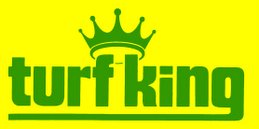REEVES: Summer lawn problems noted
By Randy Reeves
Sunday, July 19, 2009
It's that time of year again — time for another season of hot summer lawn problems. As if being able to put out enough water wasn't hard enough, now we add being able to afford to have a high water bill!
Through the first part of September, we will probably start seeing more damage from chinch bugs and grub worms.
Chinch bugs thrive in hot, dry weather and feed primarily on St. Augustine grass, but can also damage centipede, Bermuda and zoysia grass. They prefer areas of the lawn that absorb heat, like areas near driveways, sidewalks or a foundation of the house.
Chinch bugs are thought to insert a toxin that kills the grass while they are feeding. They feed on stems and nodes near the base of the plant, leaving brown patches of dead grass that will continue to grow if left untreated.
Chinch bugs are small. Adults are black with white wings that will show a triangular spot on the back. If you suspect chinch bugs, look at the outer edge of the infected areas and part the grass with you hands. You will have to look quickly, though, because they move fast. Yes, you will have to get down on your hands and knees to achieve this feat!
Some folks claim that they can use a coffee can. With both ends cut out, slip the can on the ground and fill it with water. The insects will float to the top. Well, when I do this, everything floats to the top — soil, small sticks, dead grass and everything but the chinch bug!
Your next question is what to treat with if you have chinch bugs.
There are several products on the market that do a good job — Carbayl (Sevin), Acephate (Orthene) and Bifenthrin (Talstar) to name a few. The first two should be readily available at local farm supply stores in the area. As always, be sure to read and follow the label instructions on mixing and applying these products.
White grub damage can also be one of the causes. Damage from grub feeding is easy to diagnose. They feed on the roots, and the grass will easily pull up like a carpet due to the lack of a root system.
For chemical control for grubs, you can use the products listed above. Products that contain "Merit," which is one of the newer target-specific products, will also work well on grub worms.
If you select and use a granular product, you will need to be sure and water the lawn well to move the product into the root zone where the grubs are feeding. This is another reason the read and follow label directions.
Another problem we are seeing in the area — and I have been to a few home lawns to see this — is our old friend the "Take-All Patch." This lawn disease or fungus infects the roots on the stolons of lawn grass. St. Augustine and centipede grass are the main targets here.
The disease will attack the roots and weaken the turf. When we have a dramatic change in the weather, like 102-degree days and lack of rainfall, the grass is stressed and will show signs of damage.
One method of controlling this disease is to lower the soil pH to a level that the disease finds hard to survive.
One way to do this is to make an application of peat moss at a rate of one 3-cubic-foot bale per 1,000 square-foot area now, then make two to three applications of an appropriate fungicide 14 days apart in the fall.
Fungicides that will or should do a good job are Myclobutanil (Immunox), Fenarimol (Rubigan), Azoxystrobin (Heritage) or Propiconazole (Banner Maxx). Some of these fungicides listed are really expensive and you may get a case of sticker shock. Immunox is readily available, works well and is one of the less expensive ones to use.
For further information on Extension programs, call us at 903-935-8413 or visit us on the web at http://harrison-tx.tamu.edu.
IIf you
have a lawn/tree/shrub that needs some Tender Loving Care- get The KING OF
GREEN:
Tuesday, July 21, 2009
Summer lawn problems noted
or call
us at 905.318.6677 or 1.888.TURFKING (887.3546)
If you
would like more information, please Contact us
Follow
us on Twitter http://twitter.com/turfkingofgreen
Join our
Facebook page
Copyright 2009
Turf King-Hamilton. All Rights Reserved.
Labels:
chinch bugs,
disease,
grubs,
white grub
Subscribe to:
Post Comments (Atom)


No comments:
Post a Comment